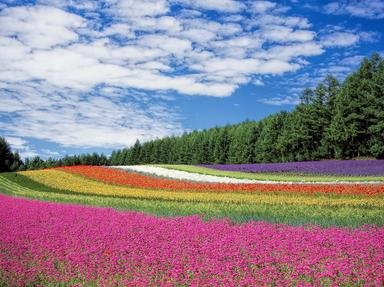Quiz Answer Key and Fun Facts
1. Tekhelet was a dye mentioned in the Hebrew Bible or Tanakh. The exact source of the dye is lost, but what color was it? The Israeli flag wouldn't be the same without it.
2. What color is "cerise," a word that entered English from French only a couple hundred years ago at most?
3. William Henry Perkin invented a dye called mauve or mauveine in 1856. What was significant about it?
4. Sienna, a shade of brown good for painting the color of wild buffalo and other wild game, has which claim to fame?
5. If you take lapis lazuli, transport it across the sea--that's the important part--and grind it into paint, what is the blue paint color called? Did I mention that the pigment had to cross the sea first? Because that's important.
6. Rubia tinctorum, or dyer's madder, was a plant used as a natural dye, until chemical substitutes began to be developed in the late 1860s. It was even used for British uniform coats, before, during and after the American Revolution. What color did madder dye?
7. Amaranth is a tall plant that produces bright red flowers and edible beige grain. There's a red food dye called amaranth, too. The grain is healthful. The healthfulness of the food dye is controversial. How are the plant and dye related?
8. Cudbear was a purple dye invented by Dr. Cuthbert Gordon of Scotland, who patented the process in 1758 and was soon shipping tons of purple dye from his secret laboratory. What raw material did he use for the dye that people were likin' so much?
9. Delft, the color, wasn't a paint or dye made by the delft pottery folks, but delft pottery was so well known that when people thought of delft, what color did they think of? They were only unhappy when they couldn't get it.
10. Shakespeare used the word "incarnadine" in Macbeth to mean making an object a certain color, and the word soon entered the language as a noun meaning that color. What color is "incarnadine" in archaic usage? It's a color important in Macbeth.
Source: Author
littlepup
This quiz was reviewed by FunTrivia editor
agony before going online.
Any errors found in FunTrivia content are routinely corrected through our feedback system.

